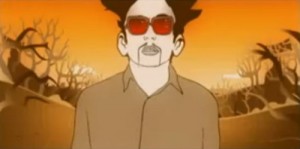 I like a good animated video and this one works really well. It’s a good looking video and it tells a story.
I like a good animated video and this one works really well. It’s a good looking video and it tells a story.
We meet the hero of the story waking up in the desert. He’s just survived a plane crash and discovers a briefcase full of money. Not that it will do him much good when he’s alone in a hot, barren landscape.
He thinks he spies a lush, wet oasis, but, yes, it turns out to be a mirage, complete with an ominous skeleton hanging from a dead tree. This sparks off a hallucination where he plays skulls like a glockenspiel, but he comes back to reality and trudges on. It reminds me a bit of the Sola Rosa video for “Don’t Leave Home”, another slightly surreal desert adventure, only it’s from the skeleton’s perspective.
Eventually the traveller comes across a detention camp, so he carefully removes his fake moustache and replaces it with a “summer moustache” which looks exactly the same as the previous one (a winter moustache?).
A tank rumbles past, but there doesn’t seem to be any sign of the detention camp. Instead he ends up in a place with giant Easter Island-like statues, where upon it rains. The waters rise fast and high, sweeping him away and scattering his money to the tides. Is this the end of our antihero? No, he wakes up on a pleasant beach, being pecked by a pukeko.
The video was directed by James Littlemore and Steve Scott and it looks so good. Many of Salmonella Dub’s videos had a low-budget look to them, like the sort of thing that was quickly filmed in the middle of a tour. But this one feels like a lot of time and effort has gone into it. And as a result, it’s simple, clear and very stylish video.
Best bit: the hallucinated skull solo, where the higher floating skulls make higher notes.
Directors: James Littlemore, Steve Scott
Ngā Taonga Sound & Vision
Next… f’n oats.
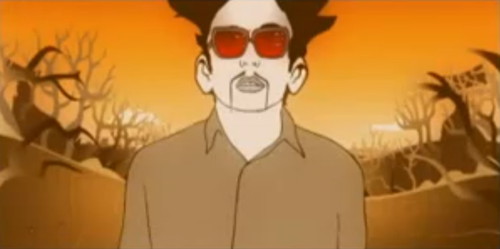

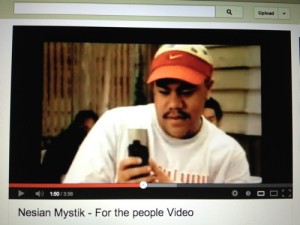
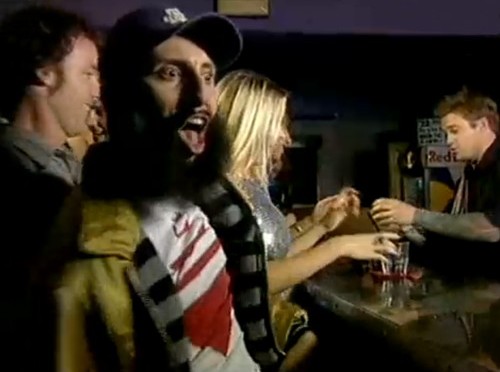
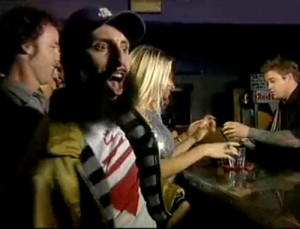 “Are they singing about speed,” wonders YouTube uploader Haurang1. And it’s not hard to come to that conclusion, with both the song and video seemingly about the crazy-arse world of amphetamines. Oh, like a down-under version of
“Are they singing about speed,” wonders YouTube uploader Haurang1. And it’s not hard to come to that conclusion, with both the song and video seemingly about the crazy-arse world of amphetamines. Oh, like a down-under version of 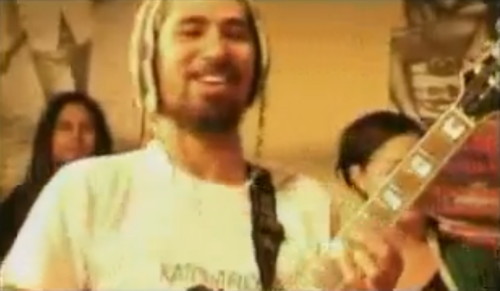
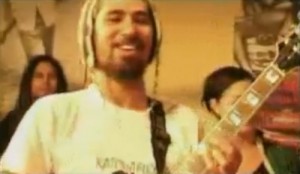 Oh, Katchafire. Previously the only Hamilton bands that had made a national impact were bogan rockers like Knightshade and Blackjack. But along came Katchafire, a roots reggae band who not only had three top-10 singles but had 18 NZ On Air-funded music video. And this is a band who has survived despite line-up changes due to what its Wikipedia entry describes as “commitments with other bands, family and religion”.
Oh, Katchafire. Previously the only Hamilton bands that had made a national impact were bogan rockers like Knightshade and Blackjack. But along came Katchafire, a roots reggae band who not only had three top-10 singles but had 18 NZ On Air-funded music video. And this is a band who has survived despite line-up changes due to what its Wikipedia entry describes as “commitments with other bands, family and religion”.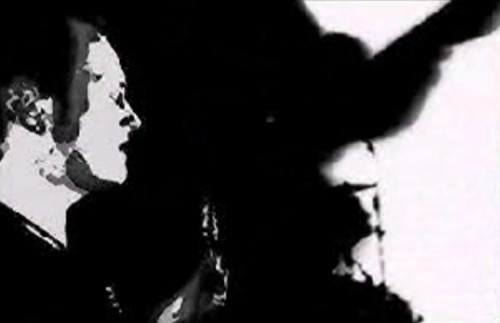
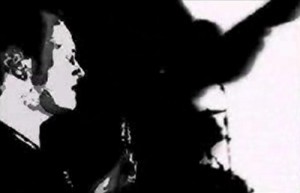 “This ain’t a love song,” snarls Paul from Gramsci, and indeed this ain’t a love song music video. It’s stark and monochromatic black figures on a white background, as the band play the song, slowed down to give it a dreamy feeling. Or as the description on MySpace helpfully explains, “drifty floaty black and white silhouettes overlaid intermingly splace”. Ok.
“This ain’t a love song,” snarls Paul from Gramsci, and indeed this ain’t a love song music video. It’s stark and monochromatic black figures on a white background, as the band play the song, slowed down to give it a dreamy feeling. Or as the description on MySpace helpfully explains, “drifty floaty black and white silhouettes overlaid intermingly splace”. Ok.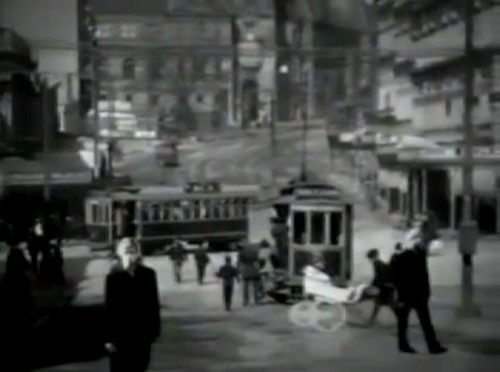
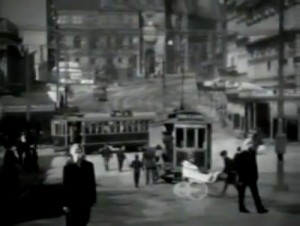 Ben King was otherwise known as the guitarist in Goldenhorse, but he had some songs that he needed to get out there, so he went off on a little side project which resulted in a self-titled solo album.
Ben King was otherwise known as the guitarist in Goldenhorse, but he had some songs that he needed to get out there, so he went off on a little side project which resulted in a self-titled solo album.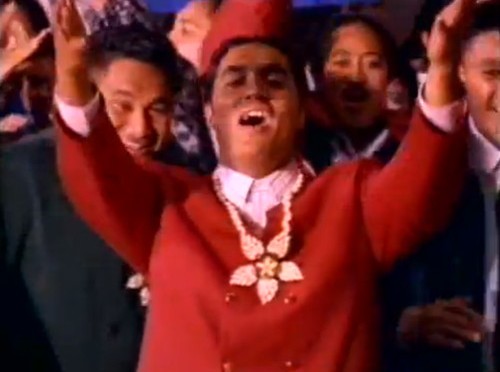
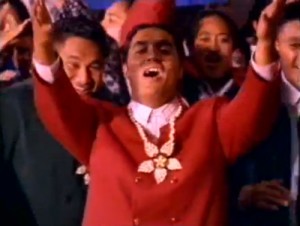 A YouTube commenter sums up the impact of this video thusly: “it was hits like this that actually triggered off and established the Pacifica brand, thus Aotearoa actually taking into consideration what the islands had to offer in terms of creative arts and music”. And there’s something to be said for a video that is full of bold, fresh young Polynesian culture.
A YouTube commenter sums up the impact of this video thusly: “it was hits like this that actually triggered off and established the Pacifica brand, thus Aotearoa actually taking into consideration what the islands had to offer in terms of creative arts and music”. And there’s something to be said for a video that is full of bold, fresh young Polynesian culture.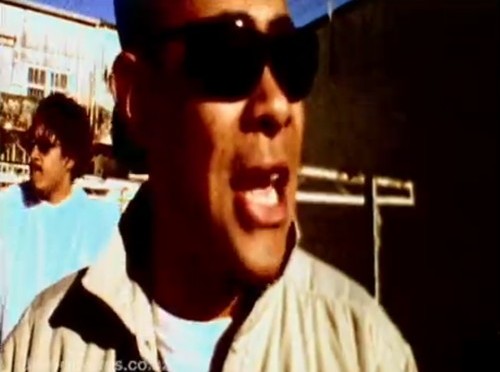
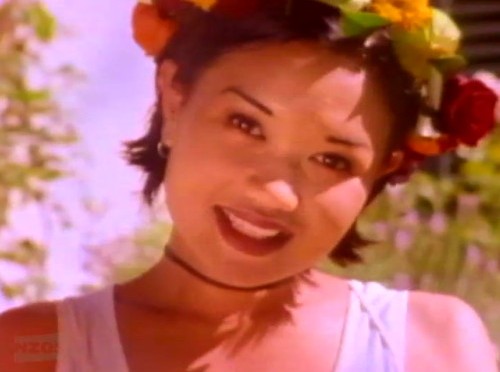
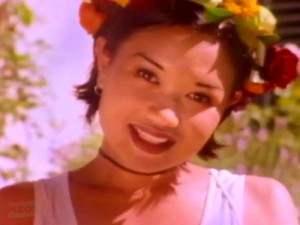 Well, this is an interesting video. Love Soup was Bic Runga’s high school band, a duo with Kelly Horgan, later of the Heavy Jones Trio. The Cashmere High pair came in third place in the 1993 Smokefreerockquest and part of the prize was a single and video to be released through Pagan Records. Only at around the same time, Sony had began to take an interest in Bic, signed her and bought her recordings from Pagan.
Well, this is an interesting video. Love Soup was Bic Runga’s high school band, a duo with Kelly Horgan, later of the Heavy Jones Trio. The Cashmere High pair came in third place in the 1993 Smokefreerockquest and part of the prize was a single and video to be released through Pagan Records. Only at around the same time, Sony had began to take an interest in Bic, signed her and bought her recordings from Pagan.